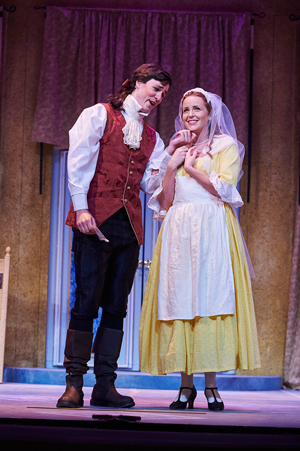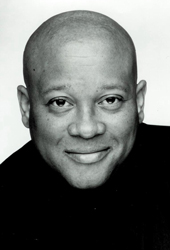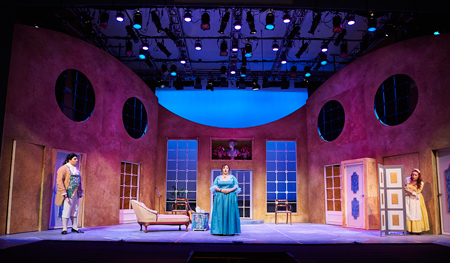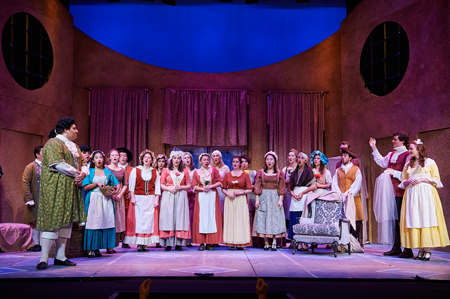by Daniel Hathaway

In a speech before the overture, Bamberger announced that when the Count Almaviva of the Thursday-Saturday cast withdrew at the last minute, the “other” Almaviva, Matthew Maisano, graciously offered to sing the role all four nights. But that would be the equivalent, Bamberger said, “of pitching four major league baseball games in a row.” Veteran baritone Brian Keith Johnson, a regional operatic treasure, was available to step in, but Bamberger didn’t want to subject him to learning his elaborate staging.
The solution was unusual but effective. Johnson sang the role from offstage left while Maisano walked the role of the Count, lip-syncing to Johnson’s splendid singing. This only worked because Johnson knew the role cold and could enter seamlessly into the music and the action, even though he never set foot onstage.
That bit of introductory drama out of the way, the lights dimmed and conductor Harry Davidson led a bright, fleet-footed performance of the overture to Mozart’s most popular opera, setting a high musical bar for the rest of the production. The vocally-strong cast maintained those lofty standards all the way through the final chorus.
Despite the complicated twists of Lorenzo Da Ponte’s comic plot, the characters end up getting married to the right people — or in the case of Count Almaviva and the Countess Rosina, patching up a damaged relationship.
Bryant Bush (Figaro) and Jennifer Robble (Susanna) might have been mismatched in physical stature (the valet towered over the maid), but they made an attractive couple both vocally and dramatically. Bush sang with an even, attractive power, and Robble especially shone in her Act IV aria (“Deh vieni, non tardar”).
Matthew Maisano made a physically imposing, if mute, Count Almaviva. Soprano Maria José Badano was a standout as Countess Rosina, receiving a big ovation for her Act II aria (“Porgi, amor”).
Victoria Kerr was a perfect choice for the trouser role of the randy page, Cherubino. Her personality almost preceded her on her first entrance, and her sprightly acting and singing were equally delightful.
Francisco Prado was vocally resonant and funny as Dr. Bartolo, and 2015 CIM graduate soprano Elizabeth Frey was invited to return, playing a seasoned and confident Marcellina (as well as serving as assistant stage director).
Supple and bright of voice, Rachel Aust made an attractive Barbarina, the daughter of Antonio, the Count’s gardener — who was ably sung and acted by Peter Boylan.
Benjamin Liu and Kevin Adamik turned in amusing performances on Thursday as the music master Don Basilio and the stuttering judge Don Curzio.
In addition to their solo work, the cast came together brilliantly for the Act II finale and the Act III sextet. The seventeen-member chorus of household servants added both visual and vocal interest to Figaro’s company scenes.
Tight, attentive playing from the pit gave the opera thrust and buoyancy, and stylish but not overly ornate harpsichord accompaniment by John Simmons moved the recitatives along. The latter were among the more impressive contributions of Brian Keith Johnson, who kept closely in touch with Simmons, Harry Davidson, and the rest of the cast even from several yards away. Some fine wind playing was crowned by duets between oboes (Teil Buck and Emily Hodges) and bassoons (John Kriewall and Marisa Esposito).
In addition to the fine singing, Figaro was visually graced by alluring sets and lighting designed by Dave Brooks, and fine period costumes, wigs, and makeup designed by Alison Garrigan.
Photos of the Wednesday-Saturday cast by Roger Mastroianni.
Published on ClevelandClassical.com November 16, 2015.
Click here for a printable copy of this article





